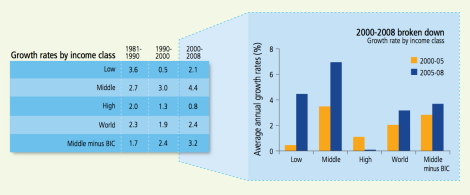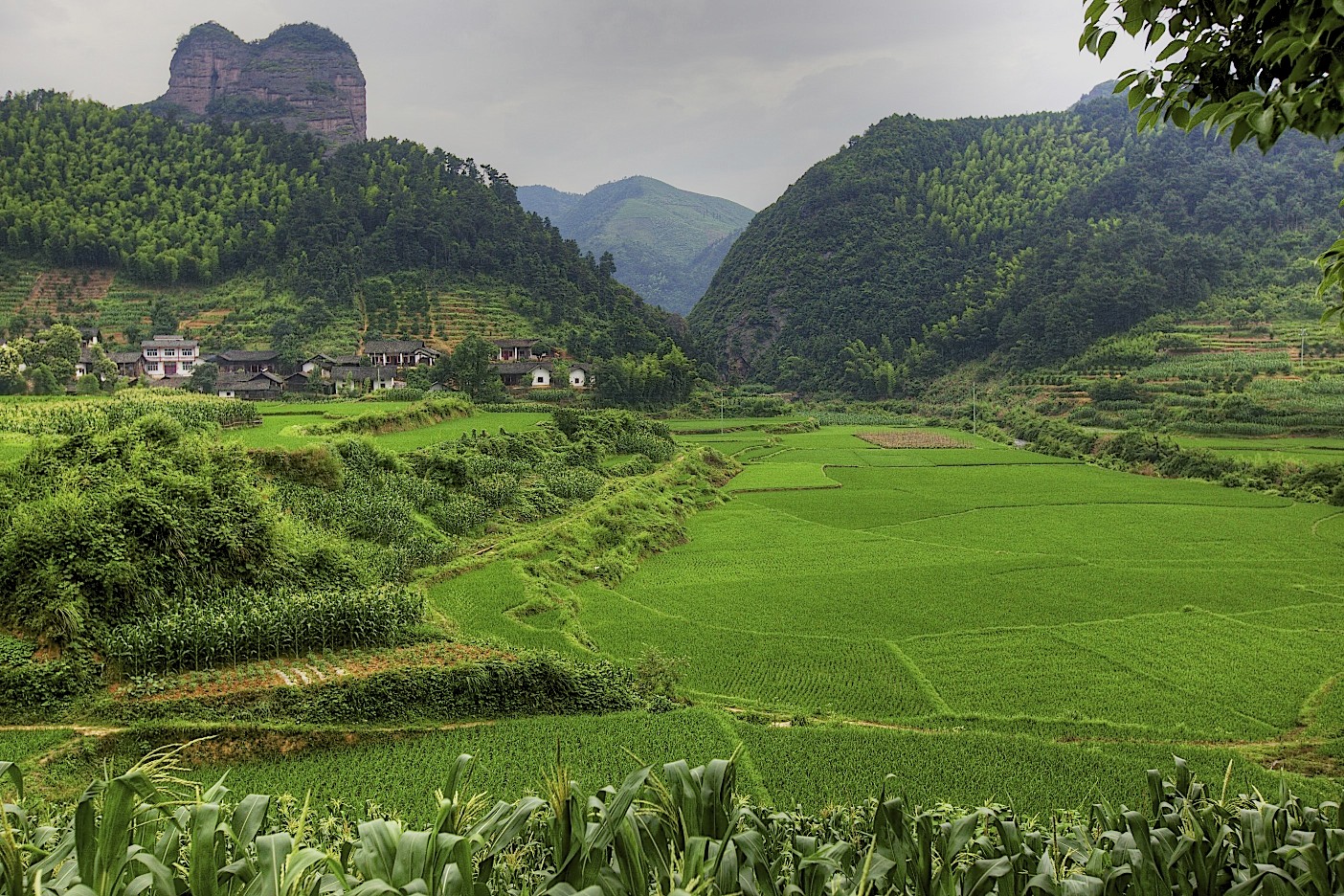Crystal-ball gazers looking for the future of food often start with this question: How the heck are humans going to grow enough food to feed our teeming masses without wrecking the planet?
There are two assumptions embedded in that question: first, that we’re going to have trouble growing enough food; and second, that we must race to keep food production up to speed with population growth, rather than reining in population growth. In questioning those assumptions over the last two weeks, my focus has shifted. If we want to prevent famine and ecological collapse, we should be thinking primarily about poverty, not food.
However, looking for ways to deal with poverty takes us right back around to increasing food production. If we fail to deal with poverty and hunger, Joel Cohen told me, we are (counterintuitively) consigning ourselves to explosive population growth. To make sure everyone gets a healthy portion of the world’s pie, he said, we’ll need a bigger pie (more food), fewer forks (level off population growth), and better manners (share more equitably). And while each of these approaches has its partisans, Cohen thinks we’ll almost certainly need all three.
As I found previously, if you can help small farmers grow more food, it’s a double whammy: It helps lift them out of poverty (better sharing) and gives us more food (bigger pie).
That means that we really do need to ask, how the heck we are going to feed ourselves? It’s not the main issue (poverty), but it’s an effective lever to work on that main issue. So we still need a contingent of farmers and scientists working on increasing yields. And that’s a problem, because for years countries around the world have been pulling money out of agricultural research.
“For almost 30 years, since the early 1980s, neither the private sector nor governments were interested in investing in agriculture,” wrote Olivier De Schutter, who recently concluded his stint as the U.N. Special Rapporteur on the right to food.
The amount of money that we invested in farming R&D has actually risen a tiny bit every year, but it’s so tiny that the amount has shrunk relative to the size of the farm economy — that is, the size of the investment wasn’t keeping up with the size of the job. Between 1990 and 2000, the world increased agricultural research investment by 1.9 percent per year. That’s about what you’d want for a cost of living increase — it doesn’t leave room for breaking new ground.

Agricultural Science and Technology Indicators – Global Assessment of Agricultural R&D SpendingBIC = Brazil, India, China – click to embiggen
“You need a certain minimum investment in agricultural science that continues year after year, because you don’t answer all the questions the first time, it’s a moving target,” said Melinda Smale, a professor of international development at Michigan State. “You need to invest in scientists, invest in institutions. Things like salaries have a recurring cost.”
When I suggested to Smale that some argue for spending money on one transformative technology that could be used everywhere, rather than pouring money into local institutions every year, she scoffed: “We should dispel this myth of the silver bullet. That’s just bullshit. What works in one place will not work in another. You cannot export a single uniform model.”
The Green Revolution — the modernization of agriculture that occurred between the ’40s and ’60s — is often the poster child for the single uniform model. After all, Norman Borlaug, the father of the Green Revolution, was able to rapidly spread improved seeds around the world instead of breeding strains to be adapted to local conditions. But the seeds were only part of the Green Revolution, Smale said. It also relied on tremendous investments from governments around the world to pay for wells, canals, and transportation systems to move harvests and fertilizers.
To build agricultural systems that are truly adapted to local environmental conditions, we’d need enough investment in agriculture to sustain various types of research, and farmer training institutions in each of those environments. The question of what that money should pay for (agroecology research? fertilizer?) is a contentious one, and I’ll get to that soon. But first: there was an increase in agricultural R&D after 2008, when food price spikes scared a modest amount of money out of leaders around the globe.
Were those price spikes a sign that we really were closer to running out of food than I’ve suggested here so far? I’ll try to answer that next.



